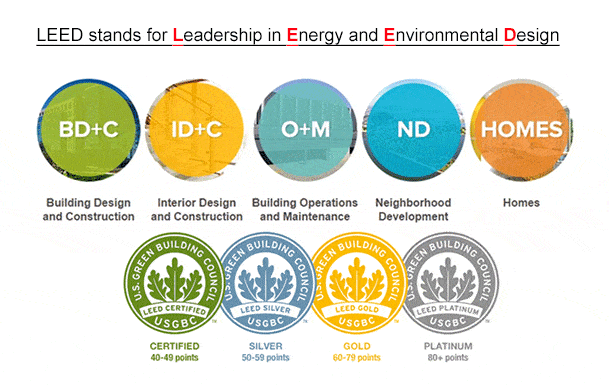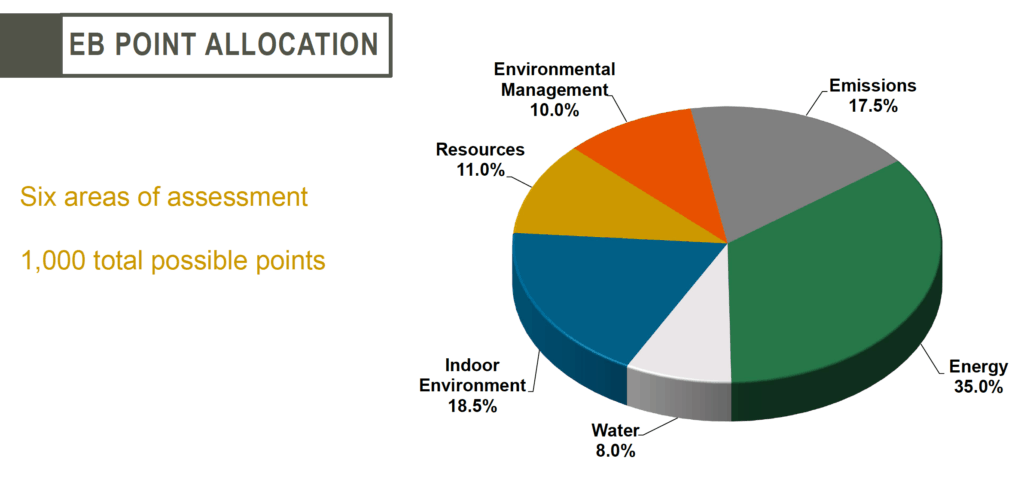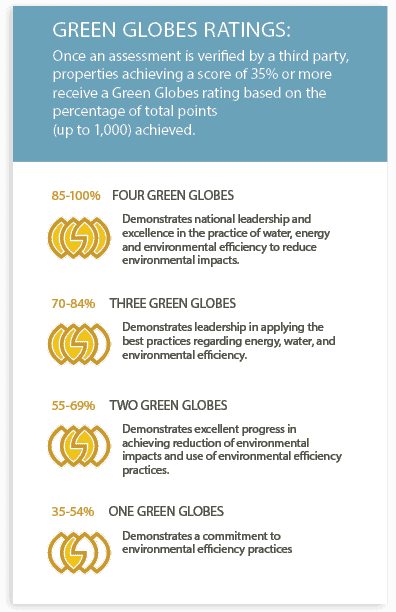Data center sustainability is a more important topic than ever.
According to NetworkWorld and a new study published by the American Association for the Advancement of Science (AAAS), data centers around the world “accounted for about 205 terawatt-hours of electricity usage in 2018, which is roughly 1% of all electricity consumption worldwide”.
Since electric power is the largest variable cost item in data center operation, energy efficiency directly impacts the bottom line.
It comes as no surprise then that energy efficiency, and sustainability in general, are of critical importance within the data center industry. Here at Prime Data Centers, we take sustainability very seriously and we recently evaluated the various sustainability certification programs for one of our facilities.
Given the proliferation of various building sustainability benchmarks and certification programs over the past few years, we wanted to help other companies in the industry by sharing some of our research.
This post will help sort out the landscape and highlight which are most relevant to particular company profiles and objectives.
Basic Categories of Building Sustainability Certifications
First, let’s start off by explaining the two basic categories of building sustainability certifications: so-called “whole building” and energy-only.
Perhaps the most well-known building sustainability certification program around the world is LEED. LEED, administered by the US Green Building Council, or USGBC, is a whole-building certification program. This means that what’s being measured or certified is more than just the energy efficiency or carbon footprint of the power source. LEED also measures things like inside air quality, building materials, water usage, and much more.

Green Globes is another good example of a whole building certification program. It is administered by the Green Building Initiative, or GBI, and measures energy and water efficiency, indoor environmental attributes, site and resource use issues, as well as resilience and design, construction, operations, and maintenance best practices. Green Globes is the second most prevalent building certification program in North America.
On the other hand, there are simpler, energy-only certification programs. As the name would suggest, these programs only certify the energy efficiency of the building.
We should note an important distinction here. When we’re talking about certifying the energy efficiency of a building, most of these programs only certify how efficient the energy-consuming aspects of the building are, and not the carbon footprint of the source of the energy. In other words, whether the building’s energy source is mostly clean, renewable energy or dirty, fossil fuel energy.
Standards Institutions vs. Certification Institutions
One potential point of confusion is that some of these institutions are responsible for setting national or international standards but don’t necessarily carry out certifications and audits. ISO.org is a perfect example. It is the most well-known international standards body, but according to their own website, “At ISO, we develop International Standards, such as ISO 9001 and ISO 14001, but we are not involved in their certification, and do not issue certificates. This is performed by external certification bodies, thus a company or organization cannot be certified by ISO.”
In other cases, the institution acts as both the standard-setter and the certifying body. Green Globes is a good example of this. GBI is the only commercial building rating system developer that is an Accredited Standards Developer (ASD) and has taken its rating system through a fully audited consensus process. Green Globes has twice achieved the distinction of American National Standard in 2010 and through its recent American National Standards Institute (ANSI)-approved revision in 2019.
ISO Certification in the United States
For U.S.-based companies looking for an ISO certification of any type, the American National Standards Institute (ANSI) is the national certifying body. ANAB is the ANSI National Accreditation Board and is responsible for awarding ISO certifications in the U.S. According to the ANAB website, “ISO 50001 is a base standard program in ANAB’s fee schedule.”
Cooperation and Competition Between Standards Bodies
Some of these institutions compete against one another. Others are partners of one kind or another. For example, the USGBC lists GRESB on their website as one of several official partners. In certain instances, one can even think of these as complementary, or phases. For example, on the U.S. EPA website, they note that “For firms seeking certification of an energy management system to ISO 50001, EPA recommends that the organization first apply all aspects of the ENERGY STAR Guidelines for Energy Management to make the process of certification to ISO 50001 smooth.” As another example of this type of partnership, GBI is an Energy Star Partner and incorporates the Energy Star building rating system criteria into its Green Globes rating system as well as rewarding buildings that use Energy Star certified appliances.
We’ve compiled a list of some of the most well-known certification programs around the world and noted which are whole-building programs versus energy-only programs. As you begin your shortlisting process you will want to note that some of these programs are popular in certain geographies and regions but not others. Some of these aim to be global programs and some do not.
Well-Known Whole-Building and Energy-Only Certifications:
- US EPA Energy Star (mainly the U.S.)
- LEED (global)
- Green Globes (mainly the U.S. and Canada but expanding)
- GRESB (global)
- ISO 50001 Energy Management Standard (global)
- ISO 14001 Environmental Management Standard (global)
- BREEAM (UK)
- CASBEE (Japan)
- SS564 Part 1 (Singapore)
- Class-G (global)
- CEEDA (mainly ex-U.S.)
- Fossil-Free Data (global)
The list above is fairly exhaustive. Equinix, one of the largest data center providers in the world, publicly lists every sustainability certification they have for each property around the world. They don’t use anything that isn’t listed above.
| Program/Certification | Relative Cost | Best Suited For… |
| U.S. EPA Energy Star | $ | Energy-only, US-focused |
| LEED | $ (details here) | Whole-building |
| Green Globes | $ (custom quote available) | Whole-building |
| GRESB | $ (details here) | ESG benchmarking reporting, not certification per se |
| ISO 50001 Energy Management Standard | $ | Energy-only, certification done through partners institutions like ANSI |
| ISO 14001 Environmental Management Standard | $ | Certification done through partners institutions |
| Class-G | $ (details here) | Self-certification |
| CEEDA | $ (custom quote available) | Specific to data centers. Mostly about energy. More rest-of-world than U.S. |
| Fossil-Free Data | $ (details here) | Specific to data centers. Energy-only. Explicitly about the % of fossil fuel in your data center’s energy mix. |
Energy-Only Options
If you decide to opt for an energy-only certification instead of a whole building certification (and your facility is in the US), it probably makes sense to start looking at US EPA Energy Star first. It is more of a standard in the US than the global counterpart, ISO 50001, or the relatively small programs like CEEDA or Fossil-Free Data. We know for example that Equinix lists Energy Star for its US properties and not ISO 50001. It only lists ISO 50001 for properties in EMEA.
Digital Realty also seems fairly focused on Energy Star for its US properties.
That said, if your data center qualifies for Energy Star certification and you know that the facility is also 100% powered by renewable energy, you should absolutely get the Fossil-Free Data certification as well. It shows an even more impressive level of commitment.
For additional background, here’s how the US EPA characterizes the difference between the Energy Star and ISO 50001. Notably, “A key difference between ENERGY STAR certification and certification to ISO 50001 is the result of the certification. ENERGY STAR certifies achievement of an actual level of energy performance while certification to ISO 50001 verifies an organization has specified system requirements in place.”
Existing Building Versus New Construction
Several of these programs have different paths and requirements for existing buildings versus new construction.
We reached out to LEED for comment and they said: “LEED has 2 types of rating systems, one (BD+C-buildings and ID+C-interiors) for new construction or renovation, and another (O+M) for occupied buildings. LEED also has a potentially applicable new offering of Performance Certificates from Arc.”
They continued on to note that for existing data center buildings, “the Data Center adaptation of LEED for Operations and Maintenance is the rating system to use. The requirements of each prerequisite and credit are in the Credit Library, filtered for that rating system.
When you build a new building, use the BD+C Data Center adaptation. The requirements of each prerequisite and credit are in the Credit Library, filtered for that rating system.”
Green Globes also has two separate paths, one called Green Globes for New Construction and one called Green Globes for Existing Buildings. We’ve pasted the Green Globes point allocation for Existing Buildings below. In addition, much like the ID+C – interiors program from LEED, Green Globes has the Sustainable Interiors program for “tenant improvement projects, fit-outs and remodels”.

Involve Whole-Building Certification Early in Development
If you think that a “whole building” approach would work well for your data center, a best practice is to involve your chosen certification program early in the design phase, before construction begins. This way, you’ll benefit from design advice that may help you qualify for a higher rating, and the resulting cost efficiencies, without incurring meaningfully higher development costs. After all, efficient, sustainable design is all about systems thinking. Every design decision you make for your data center has sustainability and efficiency implications.
Resources Involved & Program Rigor
Some of these certification programs are quite involved and demand a lot of resources from your company, both in terms of cost and time invested. The LEED program is a good example. It has developed a bit of notoriety for being a relatively complicated certification program that requires a relatively high degree of resources from your company and takes more time. This owes in part to the fact that the LEED certification process is relatively rigorous compared to other similar programs. So, if you’ve already got a LEED certification for your building, you can be proud knowing that you’ve passed one of the most stringent, rigorous certifications.
As your company is going through the decision process on which certification to pursue, keep in mind the tradeoff between rigor (and therefore marketing value) and resource intensity of the certification process.
Green Globes Program is Worth a Look
Green Globes is equally robust to LEED, as demonstrated by its consistent review and recognition alongside of LEED by the General Services Administration and approval for use on federal buildings. However, its known for being more adaptable and its third-party assessment process being more personal and therefore less bureaucratic and expensive in terms of cost and time invested. There is an online vs. offline application, dedicated customer support, an onsite assessment with an expert assessor, fewer hours involved, and multiple plaque and recognition options.
The other advantage to starting with Green Globes is that a data center company can leverage their white glove customer support and then once certified with them, can more easily go through another certification or benchmarking process, like GRESB, Energy Star, or CEEDA.

Green Globes has a 30-day free trial on their website. If you fill out the questions during your free trial, your answers can be rolled over to the online questionnaire if your company decides to move forward and order the project registration within the 30-day window.
To receive an assessment quote, you will need to create a GBI account.
GRESB Not a “Certification”
As mentioned above, GRESB is different in that it’s only a benchmarking service. It’s more oriented towards internal and investor analysis rather than external certification, marketing, and verification. See intro video here. It’s a worthwhile program for its intended purpose, however.
Conclusion
The data center industry is a global leader in sustainability. Hyperscalers are actually some of the largest corporate purchasers of renewable energy in the world.
For many reasons, it’s our duty to continue that work, and certification of our facilities is an important part of that. We hope that this post helps your team evaluate which certification is right for you.
What have your experiences been with data center sustainability certification? Let us know in the comment section below.






